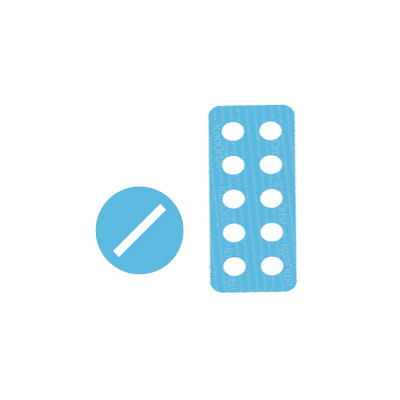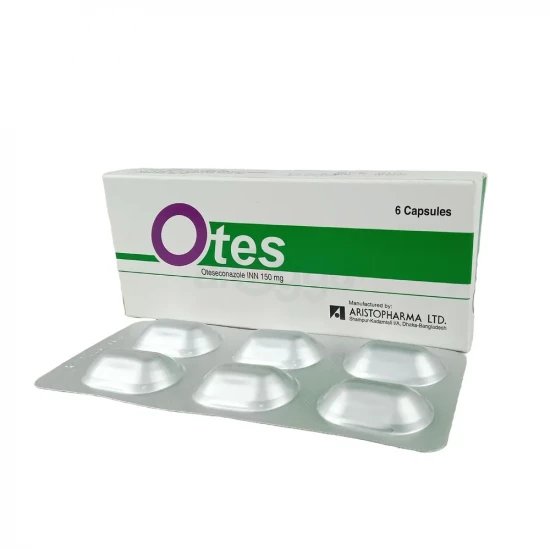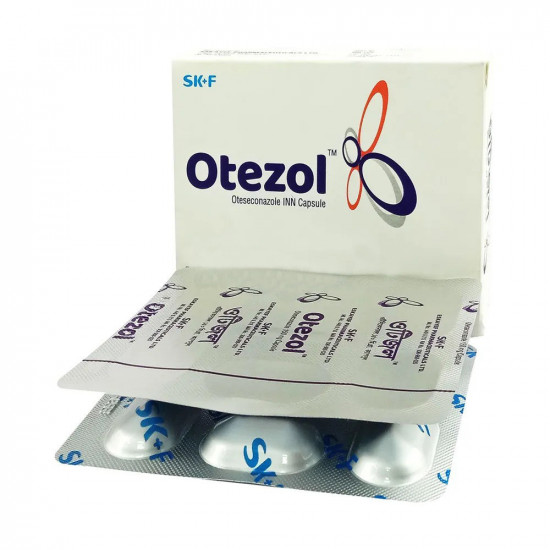
✔ 100% Authentic Product
👁️ Currently Viewing 1351
Otezol is indicated to reduce the incidence of recurrent vulvovaginal candidiasis (RVVC) in females with a history of RVVC who are not of reproductive potential. If specimens for fungal culture are obtained prior to therapy, antifungal therapy may be instituted before the results of the cultures are known. However, once these results become available, antifungal therapy should be adjusted accordingly.
Discount
Price: ৳ 1,140
MRP:
৳
1200
5%
Off

100% Genuine Products, Guaranteed

Safe & Secure Payments, Always

Fast, Secure & Efficient Delivery
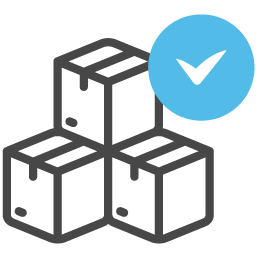
Proper Packaging
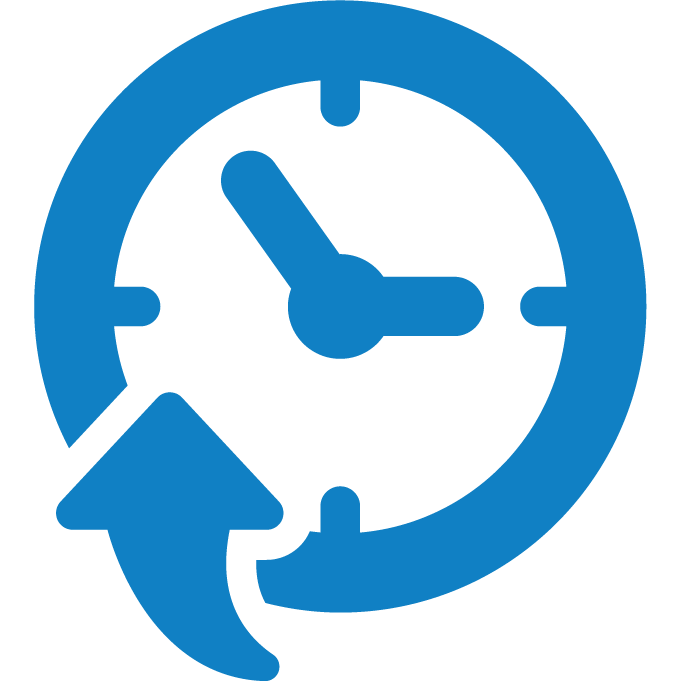 Cash on Delivery - All over Bangladesh
Cash on Delivery - All over Bangladesh Regular Delivery - 12-24 Hours, Dhaka City* Charge Tk.39-59
Regular Delivery - 12-24 Hours, Dhaka City* Charge Tk.39-59 Regular Delivery - 24-48 Hours, Other Cities* Charge Tk.99-110
Regular Delivery - 24-48 Hours, Other Cities* Charge Tk.99-110
 ফ্রি ডেলিভারিঃ - ৯৯৯ টাকা+ অর্ডারে, ঢাকা
শহরে
ফ্রি ডেলিভারিঃ - ৯৯৯ টাকা+ অর্ডারে, ঢাকা
শহরে ফ্রি ডেলিভারিঃ - ২৯৯৯ টাকা+ অর্ডারে, ঢাকার
বাহিরে
ফ্রি ডেলিভারিঃ - ২৯৯৯ টাকা+ অর্ডারে, ঢাকার
বাহিরে
100% Genuine Products, Guaranteed
Safe & Secure Payments, Always
Fast, Secure & Efficient Delivery
Proper Packaging
 Cash on Delivery - All over Bangladesh
Cash on Delivery - All over Bangladesh Regular Delivery - 12-24 Hours, Dhaka City* Charge Tk.39-59
Regular Delivery - 12-24 Hours, Dhaka City* Charge Tk.39-59 Regular Delivery - 24-48 Hours, Other Cities* Charge Tk.99-110
Regular Delivery - 24-48 Hours, Other Cities* Charge Tk.99-110 ফ্রি ডেলিভারিঃ - ৯৯৯ টাকা+ অর্ডারে, ঢাকা
শহরে
ফ্রি ডেলিভারিঃ - ৯৯৯ টাকা+ অর্ডারে, ঢাকা
শহরে ফ্রি ডেলিভারিঃ - ২৯৯৯ টাকা+ অর্ডারে, ঢাকার
বাহিরে
ফ্রি ডেলিভারিঃ - ২৯৯৯ টাকা+ অর্ডারে, ঢাকার
বাহিরে
✅ Description:
Oteseconazole is an antifungal agent whose precise exposure-response relationship and timeline of pharmacologic action have not been fully established. It functions by inhibiting CYP51 (14α-demethylase), a key enzyme involved in the early stages of ergosterol synthesis, which is vital for the development and stability of fungal cell membranes. By blocking this enzyme, oteseconazole leads to the build-up of 14-methylated sterols, compounds that are harmful to fungal cells. Its tetrazole-based structure allows it to bind metal ions, enhancing its selectivity for fungal enzymes and minimizing interaction with human CYP enzymes.
✔️ Recommended Dosage Regimens for Oteseconazole
1. Oteseconazole-Only Regimen:
Day 1: Take 600 mg as a single dose.
Day 2: Take 450 mg as a single dose.
From Day 14 onwards: Take 150 mg once weekly for 11 weeks (i.e., Weeks 2 to 12).
2. Fluconazole + Oteseconazole Combination Regimen:
Fluconazole Phase:
Day 1, Day 4, and Day 7: Take Fluconazole 150 mg orally.
Oteseconazole Phase:
Days 14 to 20: Take Oteseconazole 150 mg once daily for 7 consecutive days.
From Day 28 onwards: Take Oteseconazole 150 mg once a week for 11 weeks (i.e., Weeks 4 to 14).
Important Administration Instructions:
Oteseconazole should be taken by mouth with food.
Swallow the capsules whole—do not chew, crush, dissolve, or open them.
✔️ Side Effects
The most frequently reported adverse reactions (incidence >2%) were headache and nausea.
✔️ Interaction
BCRP (Breast Cancer Resistance Protein) Substrates: Concomitant use of Otezol with BCRP substrates may increase the exposure of drugs that are BCRP substrates, which may increase the risk of adverse reactions associated with these drugs. Use the lowest possible starting dose of the BCRP substrate or consider reducing the dose of the substrate drugs and monitor for adverse reactions.
✔️ Oteseconazole is contraindicated in:
- Females of reproductive potential
- Pregnant and lactating women
- Patients with known hypersensitivity to oteseconazole
✔️ Oteseconazole is strictly contraindicated in:
- Women who are pregnant,
- Breastfeeding mothers, and
- Females of reproductive potential.
Animal studies suggest that Oteseconazole may pose a serious risk to fetal development if used during pregnancy. Due to the drug’s long half-life, the potential exposure period extends to approximately 690 days, making it impossible to eliminate the risk of embryo-fetal toxicity in a short time.
Additionally, there is no available data on whether Oteseconazole is excreted into human or animal breast milk, or its impact on milk production or the breastfed child. Although no side effects have been reported in infants breastfed by mothers who received Oteseconazole, the limited follow-up duration prevents any conclusive safety assurances.
✔️ Precautions & Warnings
⚠️ Embryo-Fetal Toxicity Warning:
Oteseconazole must not be used in women of childbearing potential, during pregnancy, or while breastfeeding due to potential harm to the fetus or infant.
In animal studies, use of the drug during pregnancy and lactation led to serious eye abnormalities in offspring, including:
- Cataracts,
- Eye opacities,
- Bulging or enlarged eyes (exophthalmos/buphthalmos),
- Optic nerve and retinal damage,
- Lens degeneration,
- Eye bleeding.
These effects occurred at doses 3.5 times higher than those typically seen in humans treated for recurrent vulvovaginal candidiasis (RVVC).
Patients should be informed about these risks and avoid this medication if there is any chance of pregnancy or breastfeeding.
✔️ Storage:
Store at 20°C to 25°C. Protect from light when removed from the outer carton. Keep the medicine out of the reach of children.
⚠️Disclaimer:
At ePharma, we’re committed to providing accurate and accessible health information. However, all content is intended for informational purposes only and should not replace medical advice from a qualified physician. Please consult your healthcare provider for personalized guidance. We aim to support, not substitute, the doctor-patient relationship.





